Tender fish slices in a hot and tangy broth bursting with aroma, Suan Cai Yu is an iconic Sichuan dish that can be easily prepared at home.
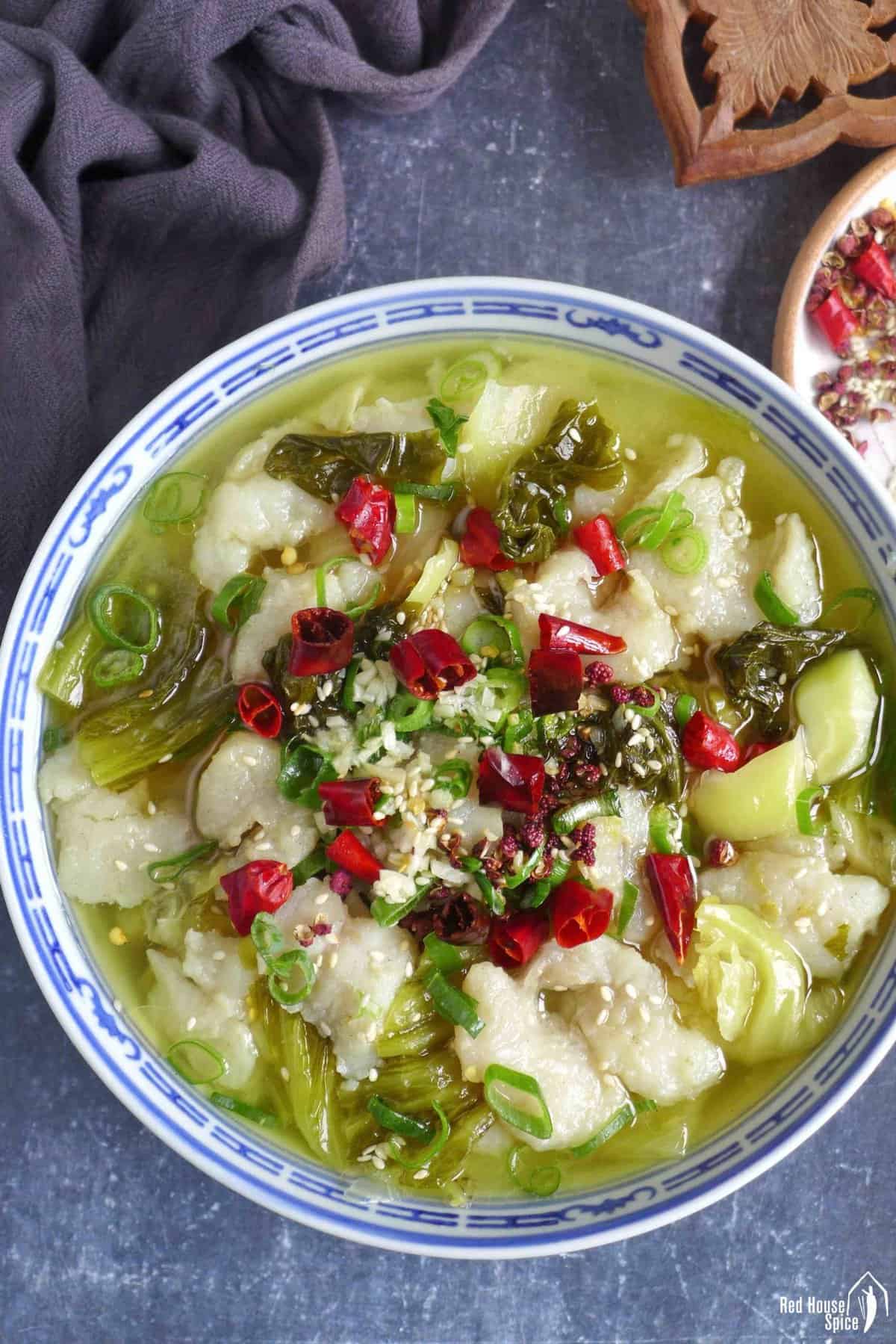
Jump to:
What is Suan Cai Yu
Today’s dish, Suan Cai Yu/酸菜鱼, is another signature dish of Sichuan cuisine that you shouldn’t miss. If you’re looking for flavor-intense dishes and enjoy a hot and tangy taste, this dish will satisfy all your craving at once.
Suān Cài Yú literally means “sour vegetable fish”. It originated in Chongqing/重庆, the largest municipality in China that was once part of Sichuan province, featuring two hallmark elements of Sichuan cuisine: the heat from chilies and the aromatic sourness from pickled mustard greens.
This dish shares many similarities with Shui Zhu Yu/水煮鱼 (Sichuan Boiled Fish), such as the use of sliced fish, the spicy soup base, and the cooking method. However, its distinctive tangy taste clearly differentiates it from the latter.

It may look like a complicated dish based on the ingredient list. However, it only involves basic cooking techniques and comes together quickly once you’ve got all the ingredients ready.
Ingredients & substitutes
Fish choice
The traditional version of Suan Cai Yu calls for skin-on and bone-in pieces of a whole fish. My recipe uses fish filets instead, as they’re easier to handle for home cooks and less hassle for diners.
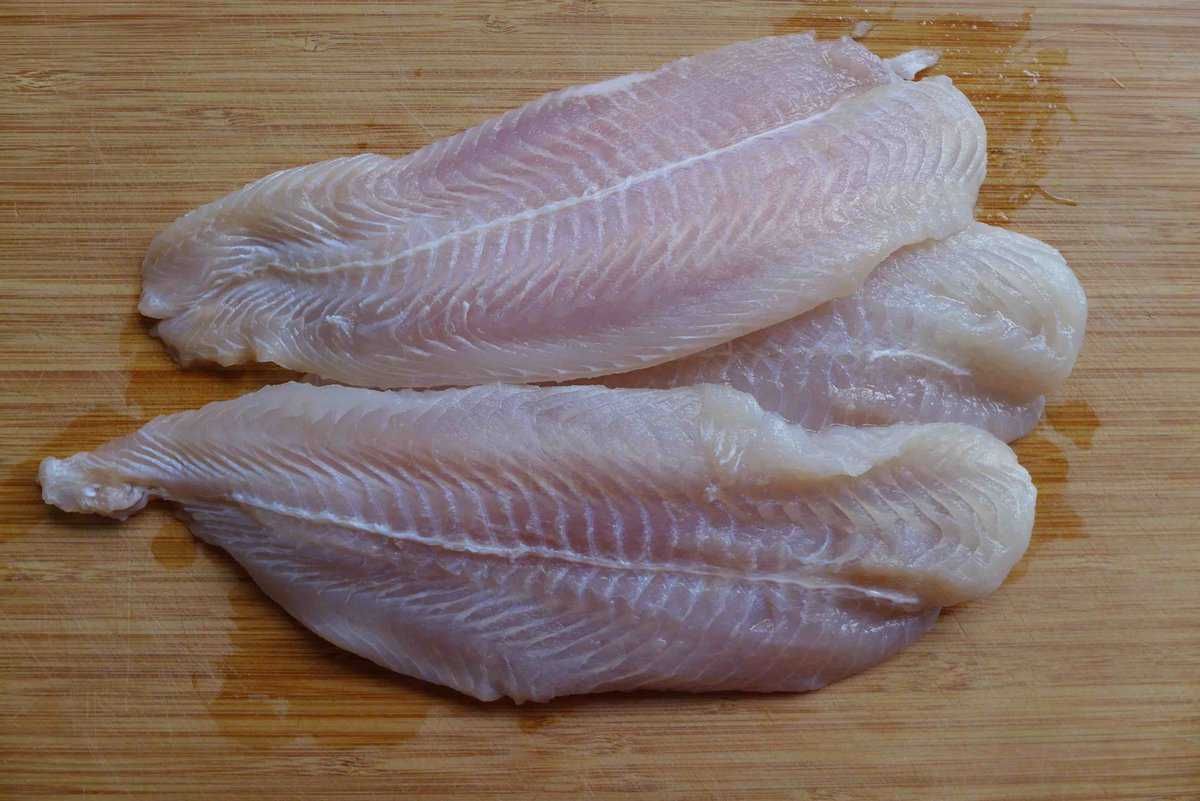
Catfish filets are a good choice. The ones shown in the image above are basa (aka pangasius), a species of catfish commonly found in the frozen food section of Chinese/Asian shops.
🌟 SUBSTITUTES: You may use other types of fish. The rule of thumb is to look for fish that isn’t overly flaky, meaning the flesh doesn’t fall apart easily once cooked.
Pickled mustard greens
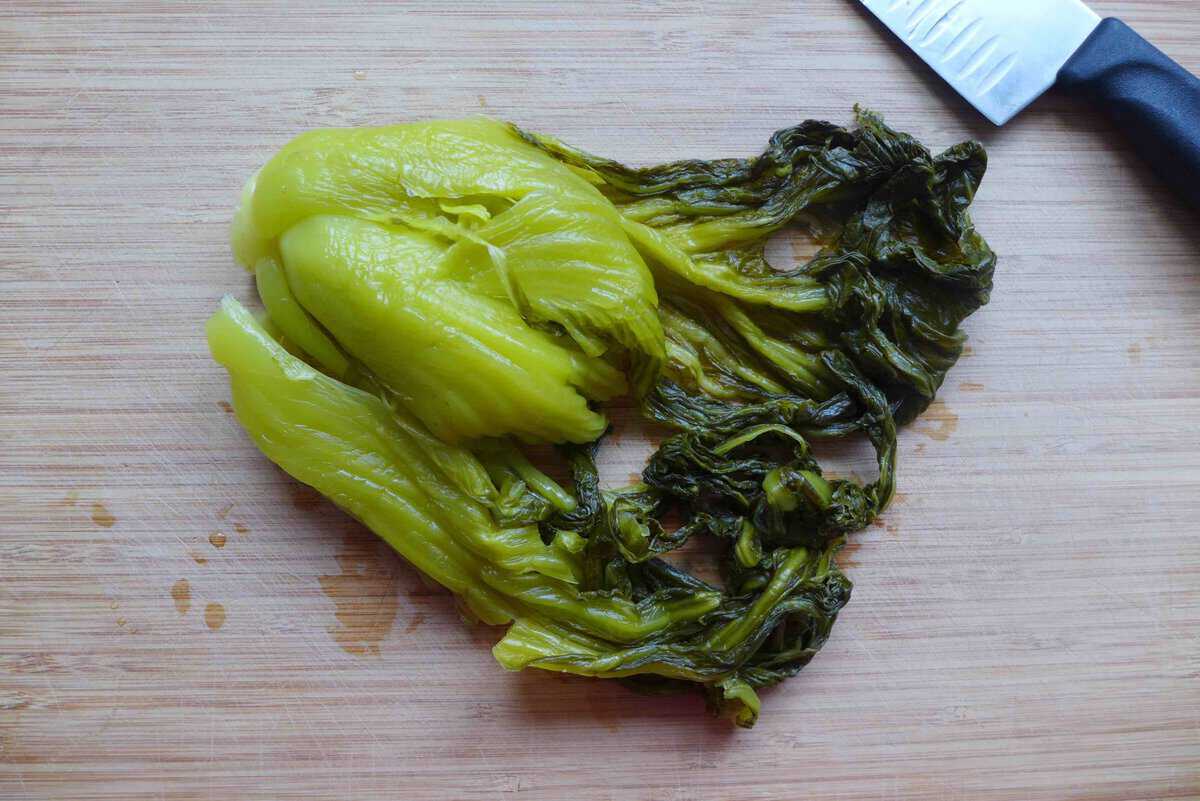
Another star ingredient of the dish is pickled mustard greens, known as Haam Choy or Suān Cài/酸菜, which means “salted vegetable” or “sour vegetable”. Essentially, they’re whole pieces of Gai Choy/盖菜, a type of mustard greens, fermented in a salty and vinegary brine.
🌟 NOTE: You can find them packed in jars or vacuum-sealed plastic bags in the fermented food section of Chinese/Asian grocery stores. Show the names mentioned above to the shop assistant if you need help locating the correct item.
Aromatics
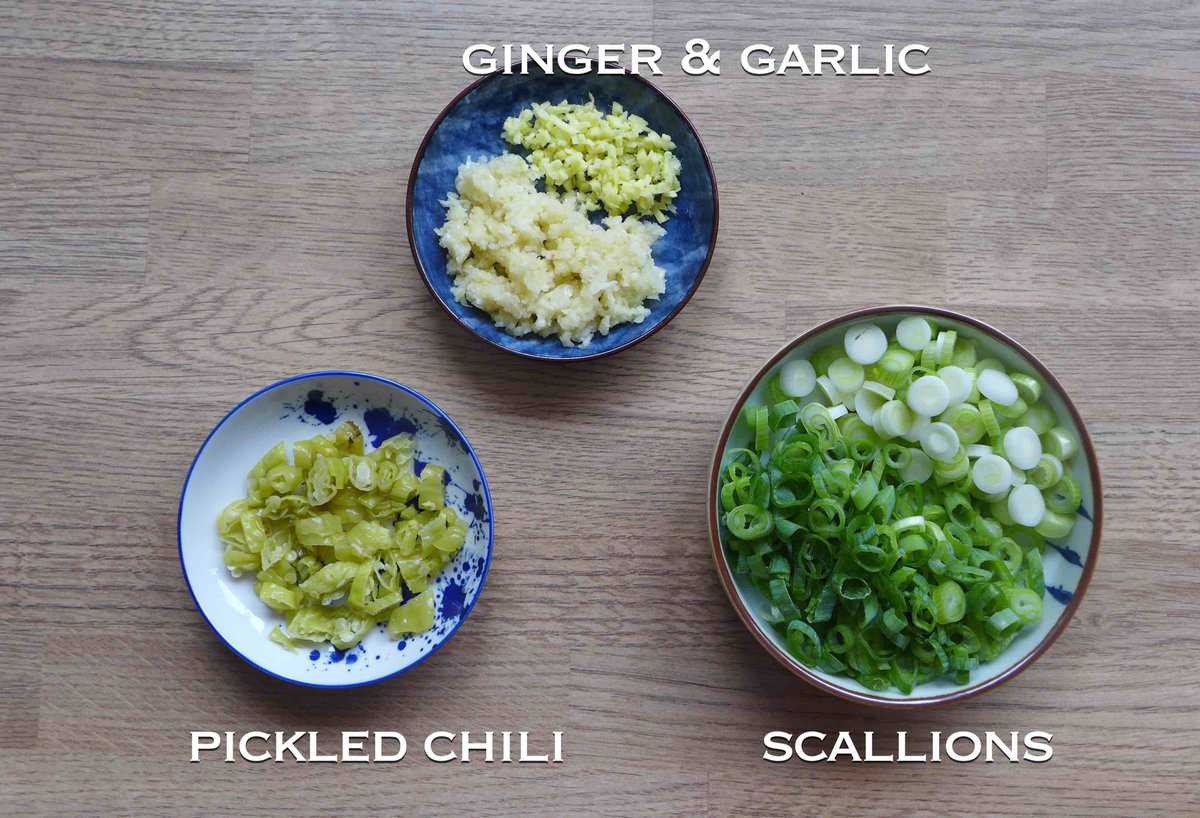
The aromatic trio of Chinese cuisine – ginger, scallions, and garlic – adds more flavor to this dish. I particularly like using a generous amount of garlic as its fragrance pairs very well with spicy ingredients.
Authentic Suan Cai Yu also calls for Sichuan pickled chilies (Pào Jiāo/泡椒) for extra heat and tangy taste, a key flavor component of many Sichuan classics, such as Shredded Pork with Garlic Sauce.
🌟 SUBSTITUTES: You can replace Sichuan pickled chilies with pickled chili garlic sauce (Duò Jiāo/剁椒), or other types of pickled chilies, such as pickled jalapeños. If you really have trouble sourcing them, feel free to skip this ingredient as this won’t dramatically change the overall taste of the dish.
Condiments
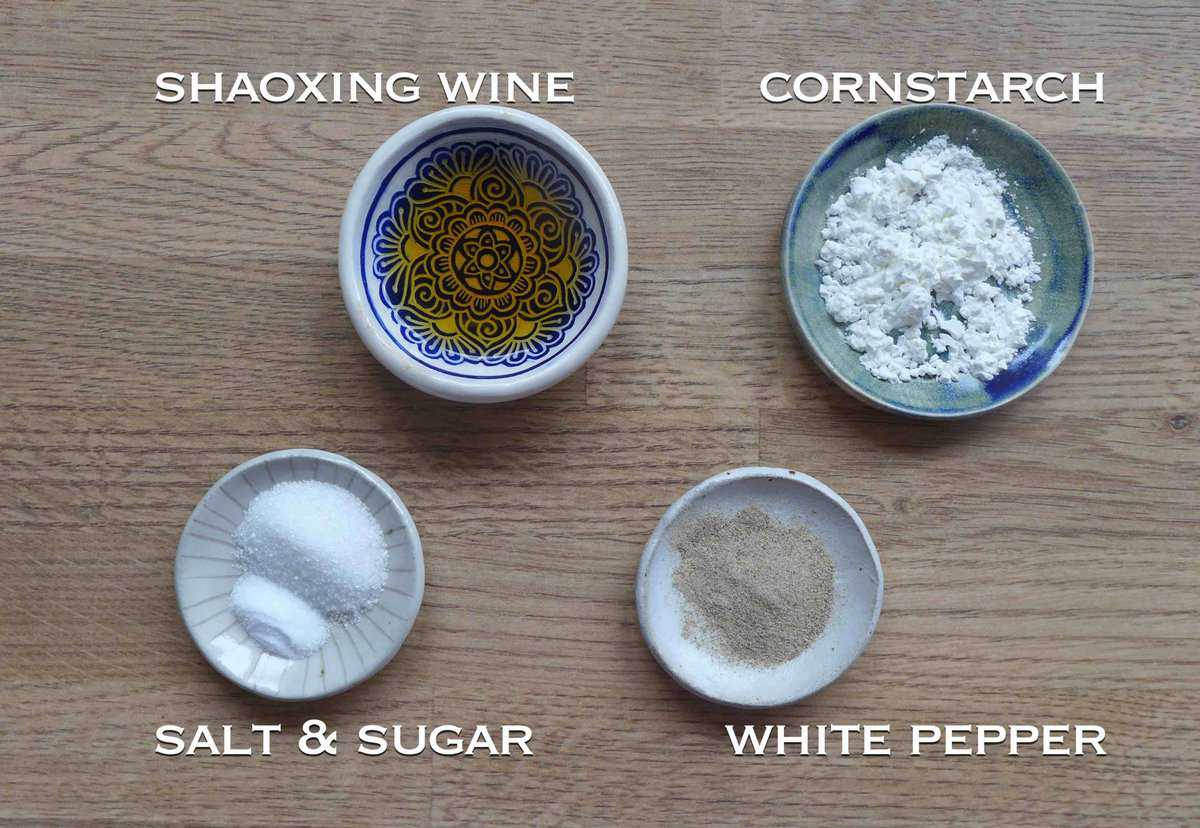
Here are five common condiments used in this recipe:
- Shaoxing rice wine (or dry sherry), for marinating the fish
- Cornstarch (or potato starch, tapioca starch), for marinating the fish
- White pepper, for extra heat
- Sugar, for balancing the saltiness
- Salt
Spices
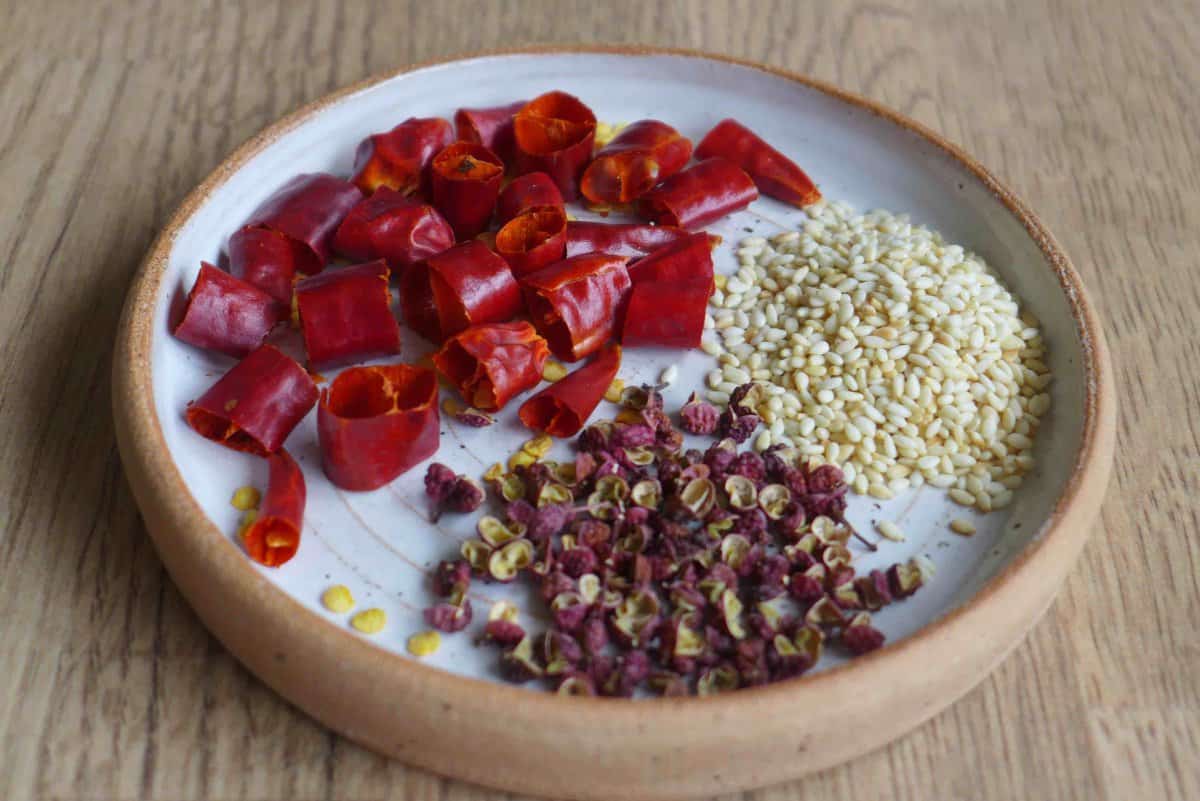
Similar to how you make Sichuan Boiled Beef, three flavor boosters – dried chili, Sichuan pepper, and sesame seeds – are drizzled with hot oil at the end of the cooking process, enhancing the overall aroma of the dish.
Cooking procedure
Step 1: Marinate the fish
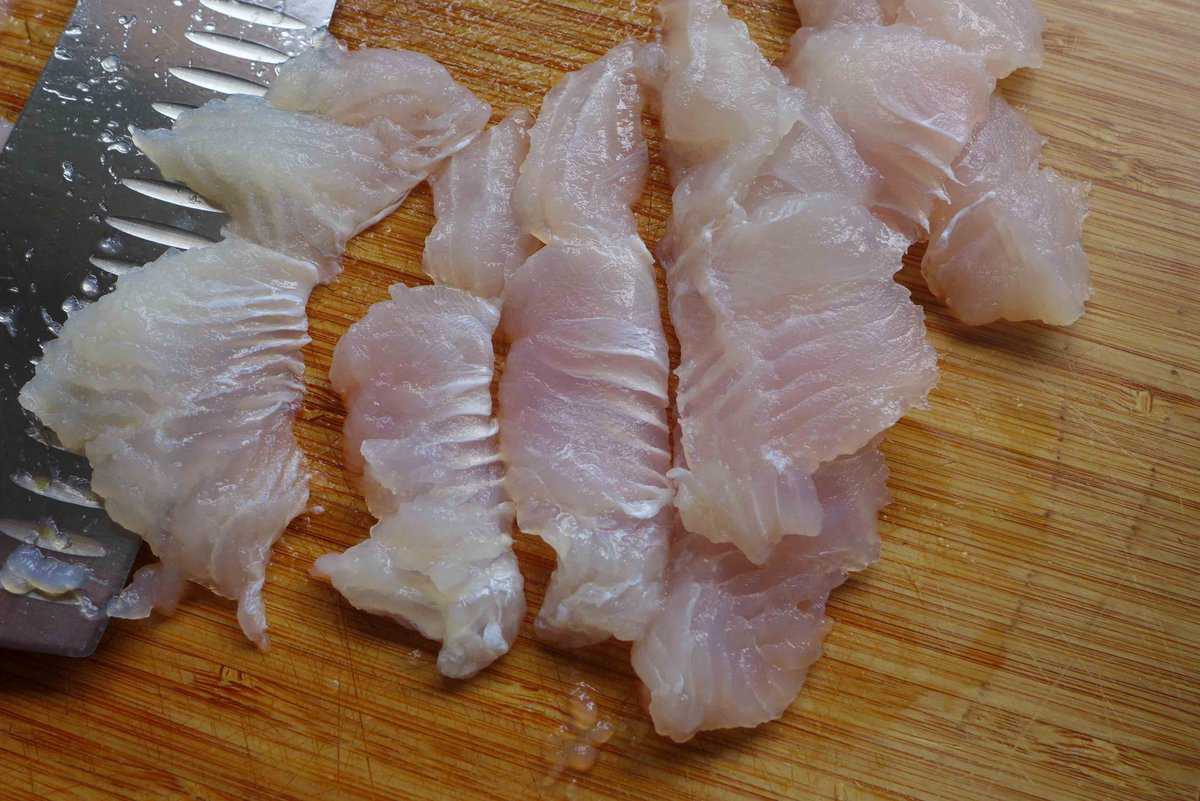
Cut the fish filets into thin pieces by slicing them at a 45-degree angle. Remember that the fish will shrink in size after cooking so make sure the slices aren’t too small.
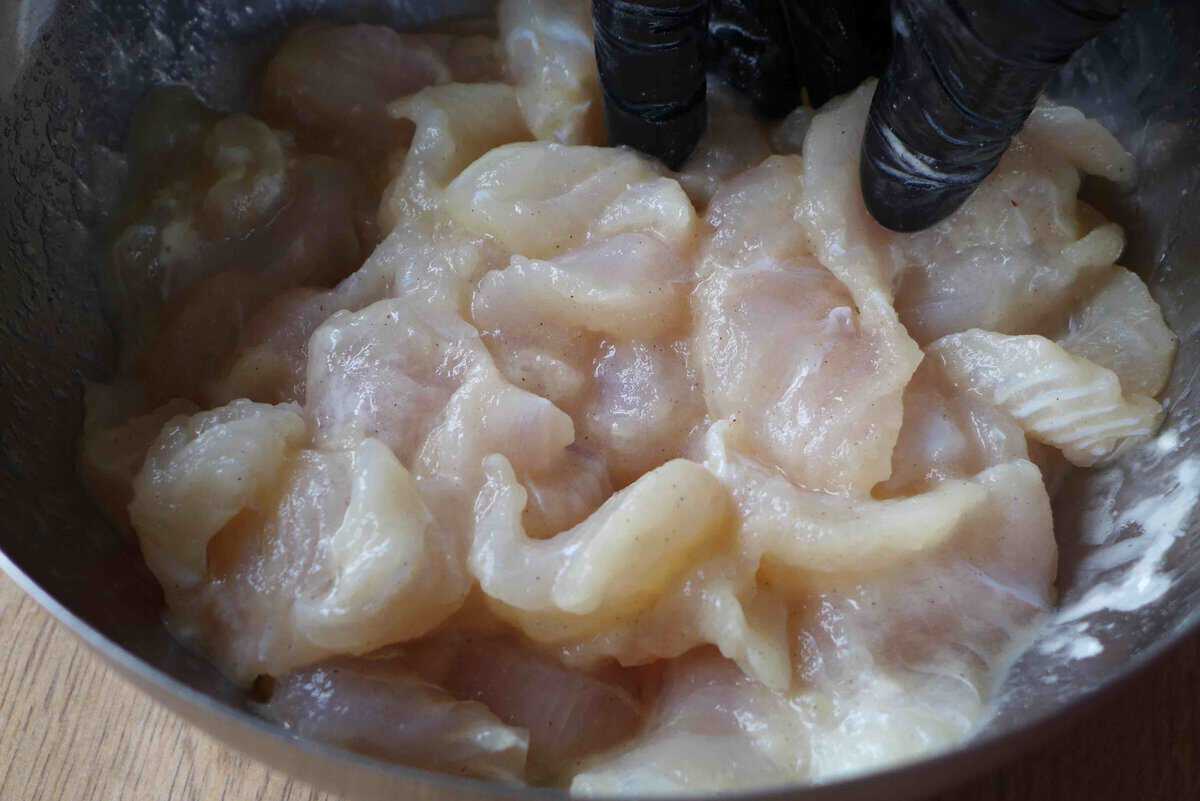
Put the fish into a bowl. Add Shaoxing rice wine, salt, white pepper, and cornstarch. Use your hand to gently mix and rub so that all the condiments are well absorbed. Leave to marinate while preparing other ingredients.
Step 2: Prepare the pickle
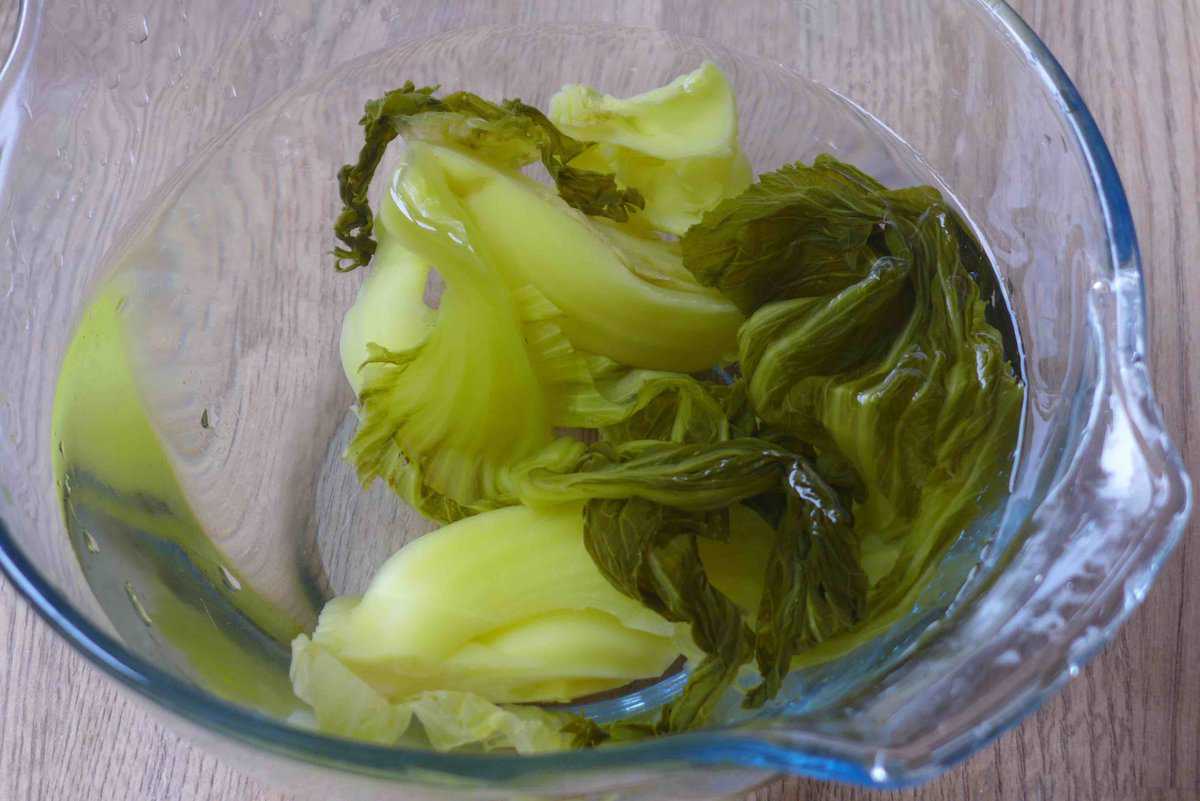
Remove the pickled mustard greens from their packaging. Rinse under running water first, then soak them in water to reduce their sharp saltiness and tanginess.
Since their taste varies from brand to brand, the required soaking time may vary. It’s best to taste a piece, bearing in mind that they’ll taste milder once cooked in the broth.
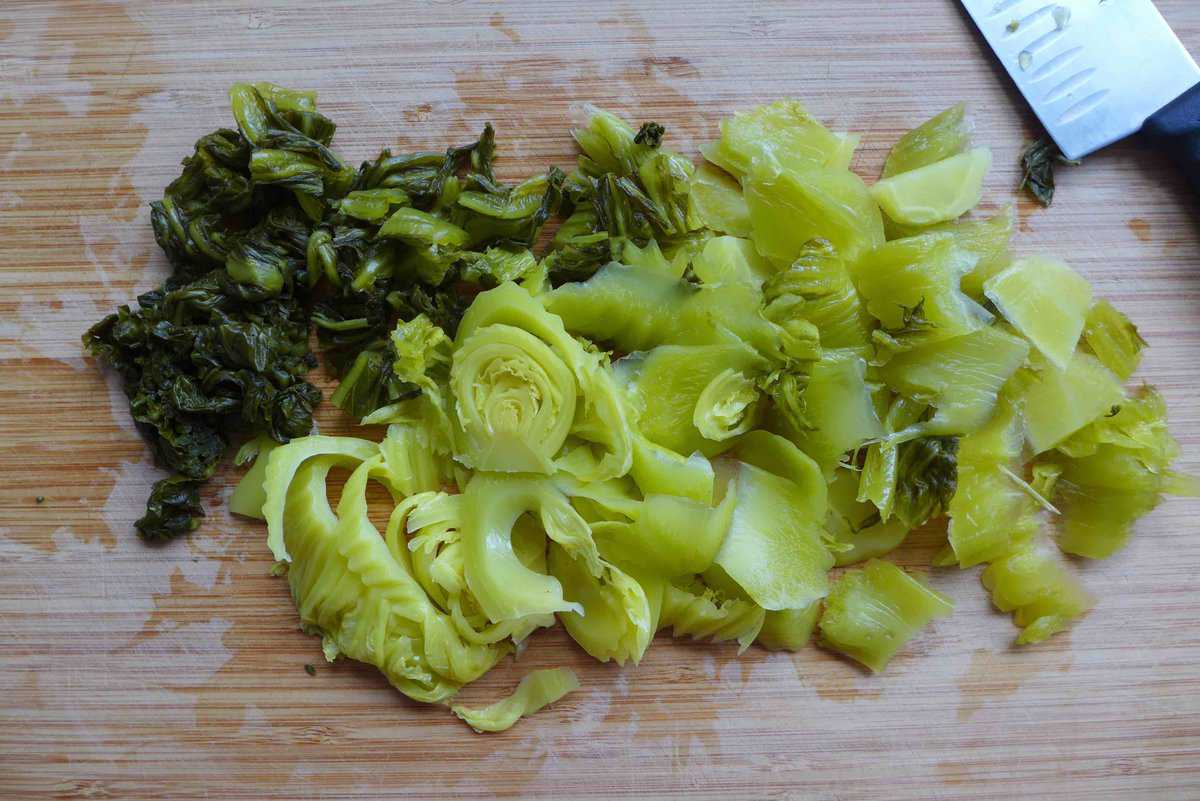
Drain the vegetables and squeeze out as much water as possible, then cut them into bite-sized pieces. Since the stem part can be quite thick, slice it at an angle to make each piece thinner.
Step 3: Make the broth
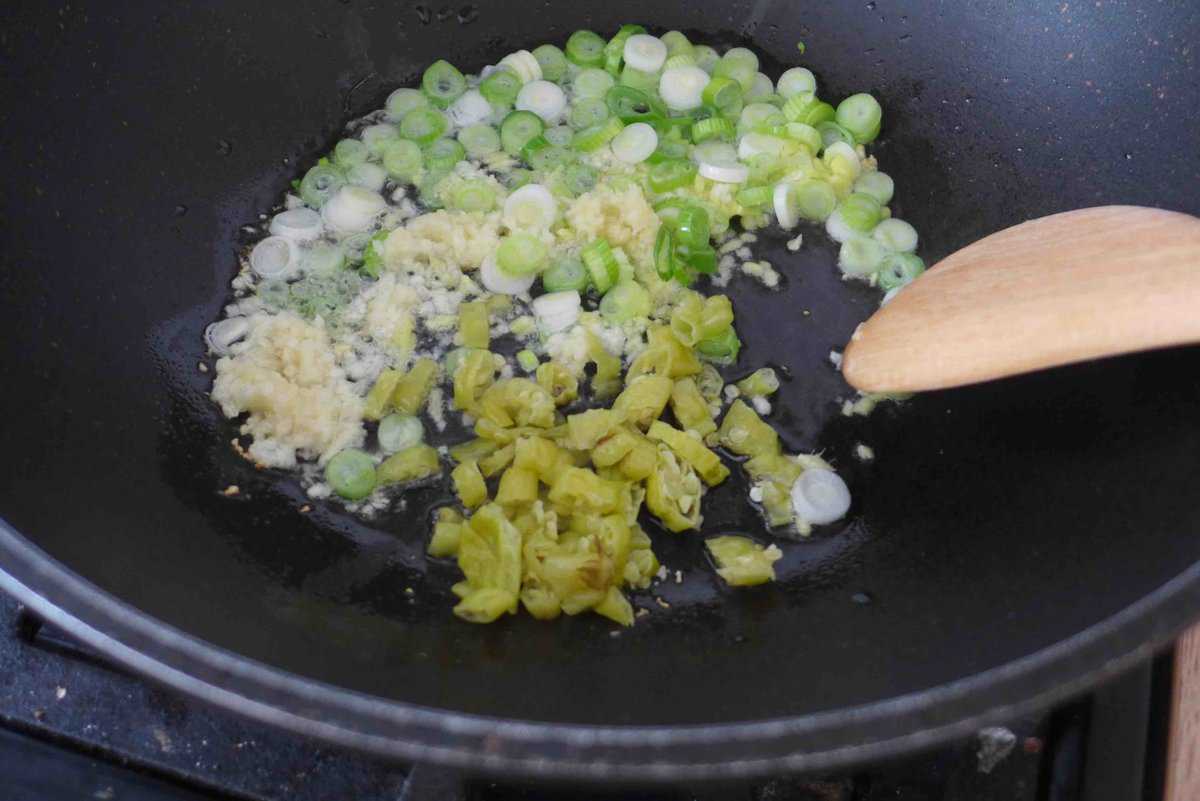
First, sizzle minced ginger, minced garlic, chopped scallions, and chopped pickled chili in hot oil to bring out their aroma (keep some of the garlic and scallions for the last step).
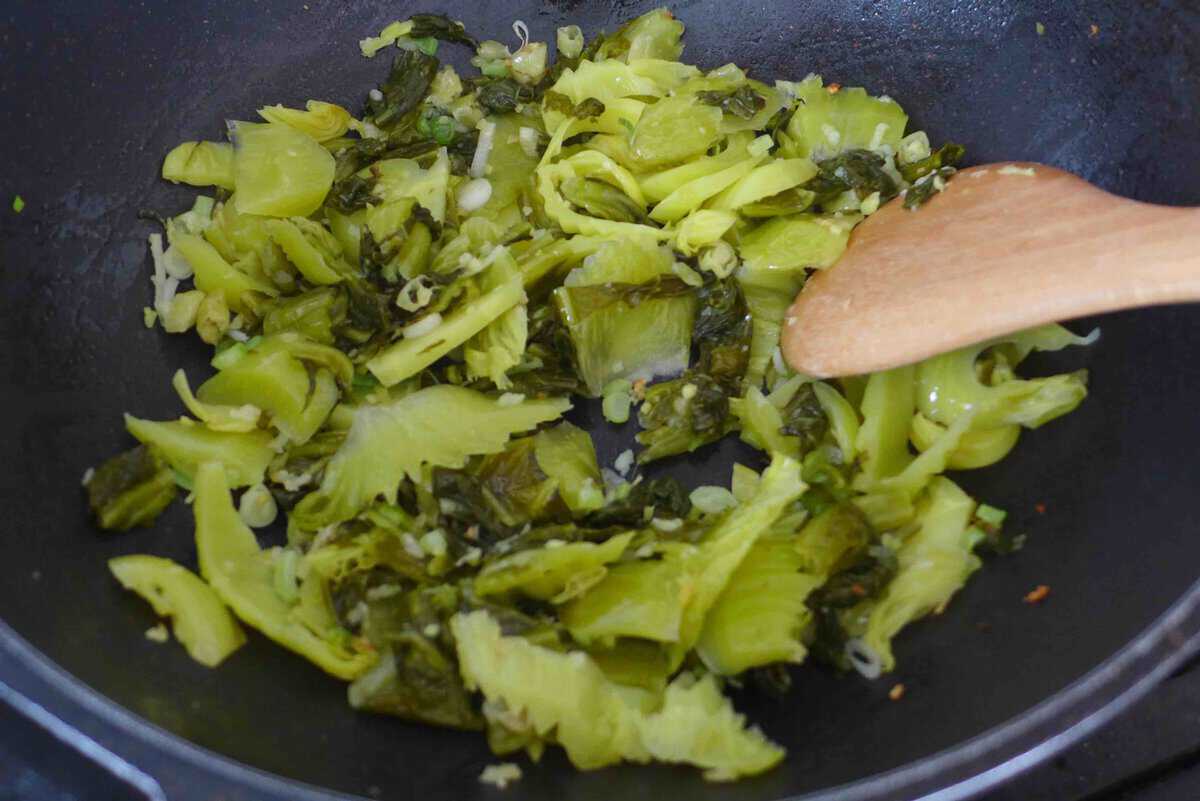
Then, stir in pickled mustard greens and fry them for about 1 minute.
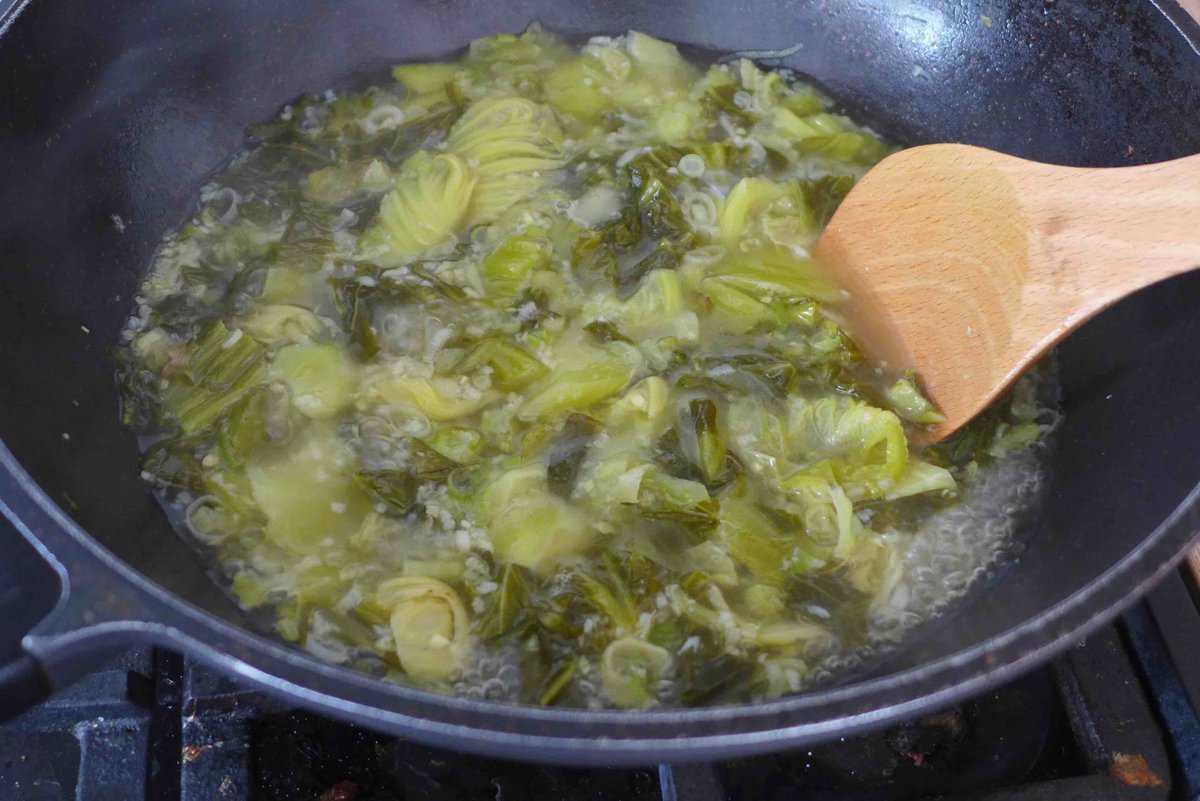
Add water, or unsalted stock if available, to the wok. Bring it to a full boil then let simmer for 3 minutes with a lid on.
Step 4: Cook the fish
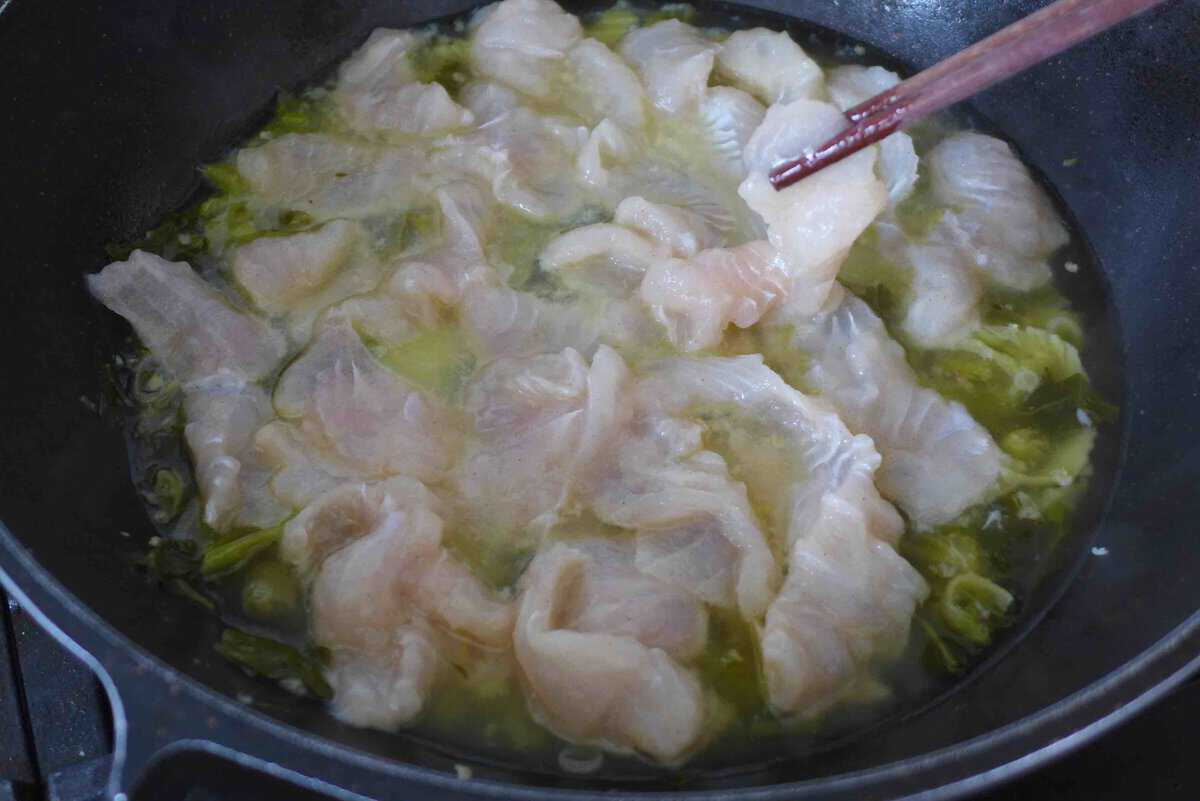
Once the broth is fragrant, add the fish. Remember to keep the heat low and arrange the fish without too much overlapping. Allow them to cook undisturbed in the gently simmering broth.
It doesn’t take long to fully cook the fish – about 2 minutes in my case, though this may vary depending on the size of your fish slices and the heat level. A sign of doneness is when the flesh loses its translucent look and becomes firm.
Step 5: Sizzle the toppings
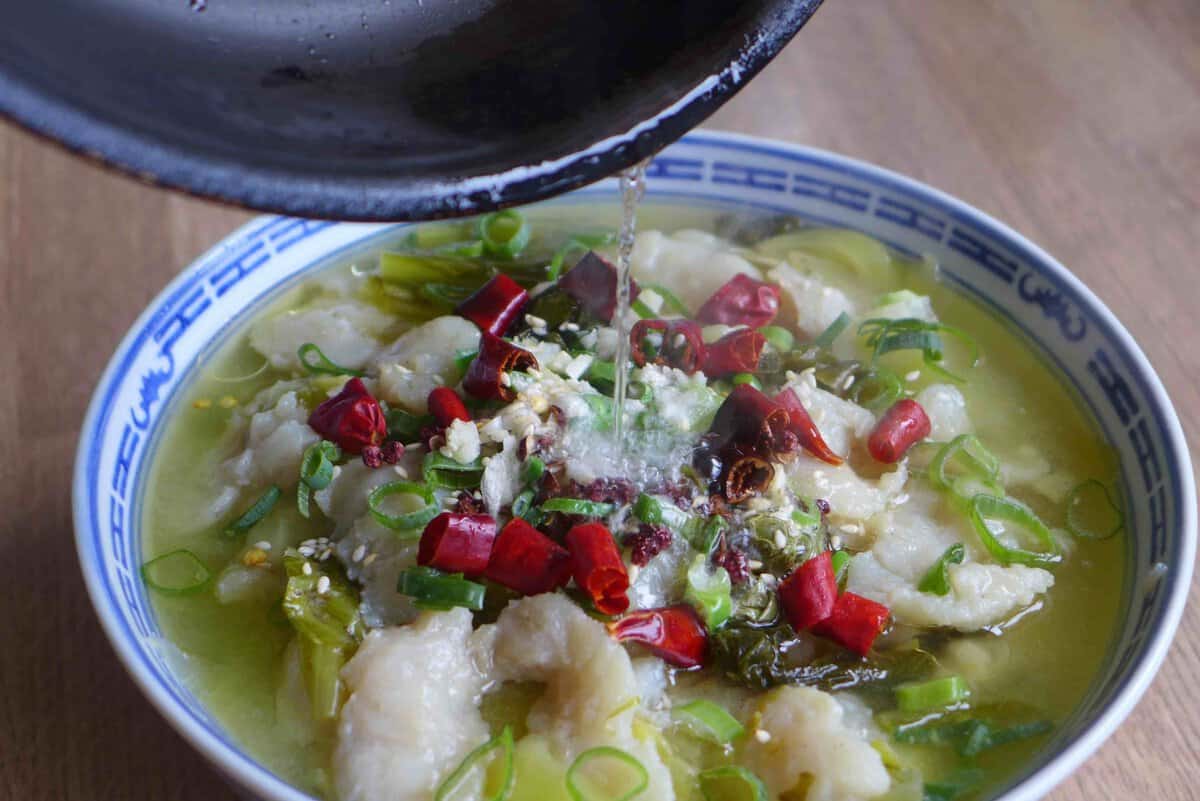
Pour the fish and broth into a large serving bowl. Put the remaining garlic, scallions, dried chili, Sichuan pepper, and sesame seeds in the center.
Heat a small amount of oil until it just starts to smoke. Pour it over the toppings. Let the aromatics and spices sizzle, then serve the dish immediately.
How to serve
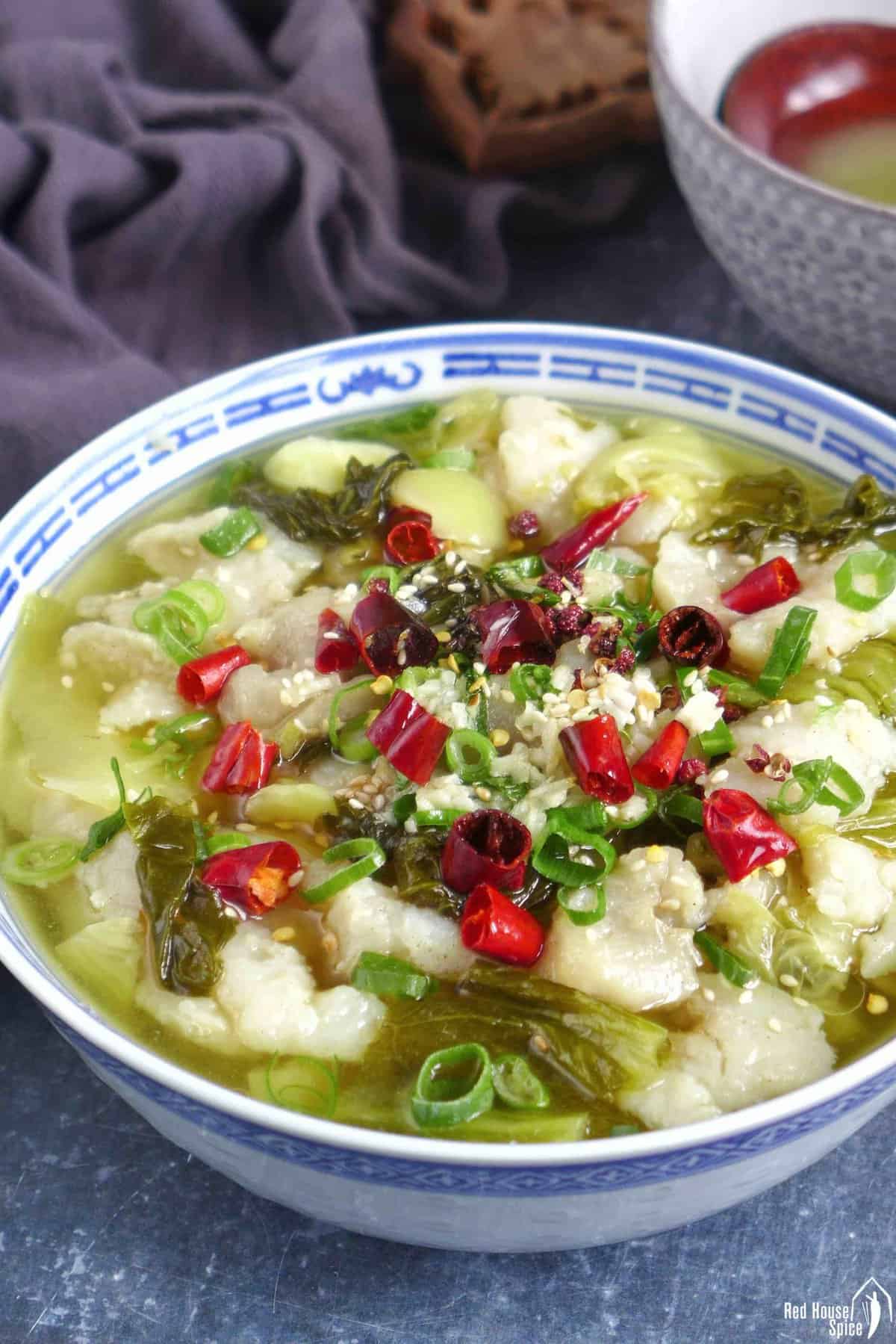
It’s best to enjoy this flavor-intense dish with plain steamed rice (so make sure it’s ready when the fish is done). Optionally, add one or two light, vegetable-based dishes on the side to form a balanced meal. Garlic Bok Choy, Spinach Salad, and Smashed Cucumber are some of the tasty options.
If you haven’t tasted Suan Cai Yu, you may find these tips helpful:
- The dried chili and Sichuan pepper are added to enhance the dish’s flavor. They are not meant to be eaten. This is similar to the spices in Chongqing Laziji, which are also not consumed.
- Although this dish may appear soup-like, the broth is usually not consumed as soup as it’s quite salty. However, it’s great when used in small amounts to flavor steamed rice.
- Here is a way to reuse the leftover broth: remove all solid pieces, add some water to dilute it, and heat until piping hot. Then, serve it as a soup for another meal.
Other Sichuan dishes
Looking for more mouthwatering dishes of Sichuan cuisine? Check out these popular recipes:
📋 Recipe card
Love this recipe? Please leave a 🌟🌟🌟🌟🌟 rating and a comment. Thank you!
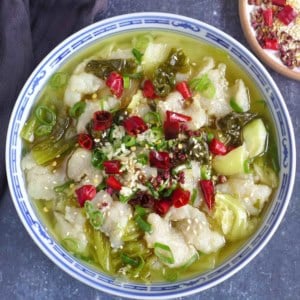
Suan Cai Yu (Sichuan Fish with Sour Vegetable, 酸菜鱼)
Ingredients
For the fish
- 1½ lb boneless catfish filets - see note 1
- 1 tablespoon Shaoxing rice wine
- 2 teaspoon cornstarch
- ¼ teaspoon ground white pepper
- ⅛ teaspoon salt
For the broth
- 7 oz pickled mustard greens - aka Haam Choy, Suan Cai
- 2 tablespoon neutral cooking oil
- 1 teaspoon minced ginger
- 5 clove garlic - minced and divided
- 3 stalk scallions - finely chopped and divided
- 1 tablespoon Sichuan pickled chilies - chopped, optional (see note 2)
- 2½ cup water - or unsalted stock
- 1 teaspoon sugar
- ¼ teaspoon ground white pepper
For the toppings
- 5 dried chlies - or to taste, chopped
- 1 teaspoon Sichuan peppercorn
- Toasted sesame seeds
- 2 tablespoon neutral cooking oil
Instructions
Marinate the fish
- Lay the fish filets on a chopping board. Slice it at a 45-degree angle into thin, large pieces.
- Put them into a bowl. Add Shaoxing rice wine, salt, white pepper, and cornstarch. Use your hand to mix and rub gently. Then leave to marinate while preparing other ingredients.
Prepare the vegetables
- Rinse the pickled mustard greens under running water, then soak them in water to reduce their saltiness. The time required differs depending on their original saltiness and your own preferences. Taste a piece, keeping in mind that it will taste milder once cooked in the broth.
- Drain them and squeeze to remove any excess water. Then cut them into pieces (slice the thick stem part at an angle).
Make the broth
- Heat the oil in a wok over medium-high heat. Add ginger, garlic, scallions, and pickled chilies (keep ⅓ of the garlic and scallions for the last step). Sizzle them until fragrant.
- Put in the pickled mustard greens. Stir fry for about a minute, then pour in water (or stock). Bring it to a full boil. Cover with a lid and leave to simmer over low heat for 3 minutes.
Cook the fish
- Put the marinated fish slices, ideally one piece at a time, into the gently simmering broth. Avoid overlapping for even cooking. Leave the fish to simmer undisturbed until they no longer look translucent and become firm.
Sizzle the toppings
- Transfer the dish to a large serving bowl. Top with the remaining garlic, scallions, dried chili, Sichuan pepper, and sesame seed.
- Heat the oil in a dry, clean pan, then pour it over the toppings. Serve immediately with steamed rice.
NOTES
NUTRITION
NUTRITION DISCLOSURE: Nutritional information on this website is provided as a courtesy to readers. It should be considered estimates. Please use your own brand nutritional values or your preferred nutrition calculator to double check against our estimates.






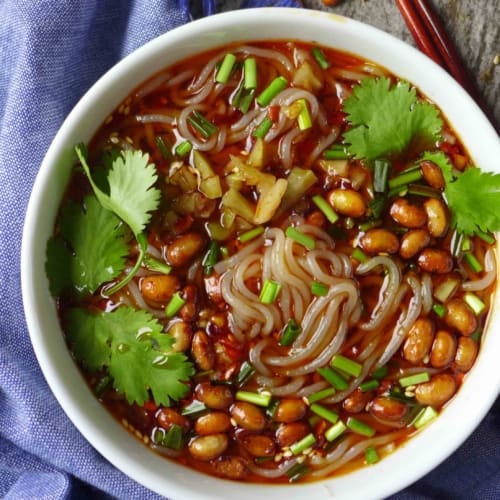


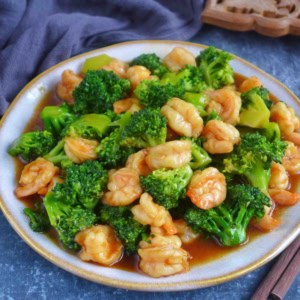
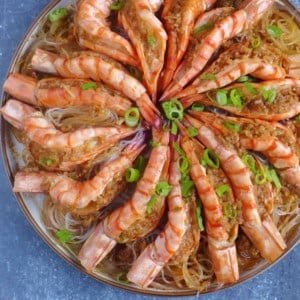

Happy New Year Wei!
I look forward to more yummy recipes from my adopted country. My mother was born and raised in China.
Helen
Happy New Year, Helen! Thank you for sharing that—it’s so special to connect through food and culture. I can’t wait to share more recipes with you this year!
Wow! Officially my favorite fish recipe I’ve ever tried! Pickled mustard greens give it a wonderful balance of flavor that sometimes I crave from vinegar, and thankfully very easy to find in most Asian markets in my area. Followed almost exactly, but I did add a little extra pickled peppers because I like a little extra spicy and tangy, and it came out absolutely perfect. The best part is if you have extra broth, you can cook more fish the next day and have even better flavor because the broth is more mature the second day. Another thing I added was sliced nappa cabbage for fun and health, just put it in right before the fish. Fairly easy weekday meal with phenomenal flavor.
Thanks for the feedback, Greta! Making a second dish with the leftover broth is what I usually do. So happy to know you enjoyed the dish.
Made this recipe today used sauerkraut instead of the mustard greens. In absence of knowing what the authentic taste should be, I thought it came out well.. lightly sour and spicy. Love all the dishes Ms. Wei posts.
So happy to know my recipe worked well with sauerkraut!
It’s much easier than I thought to make it. My family loved it. Will make it again soon.
It’s indeed a simple dish. So happy you enjoyed it!